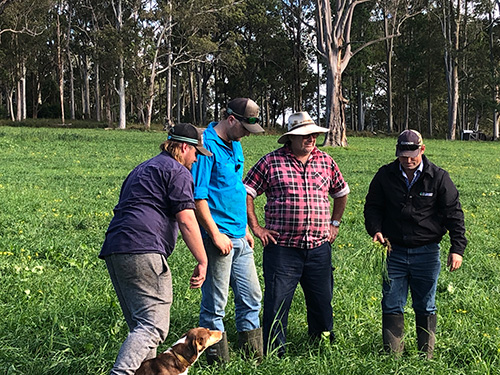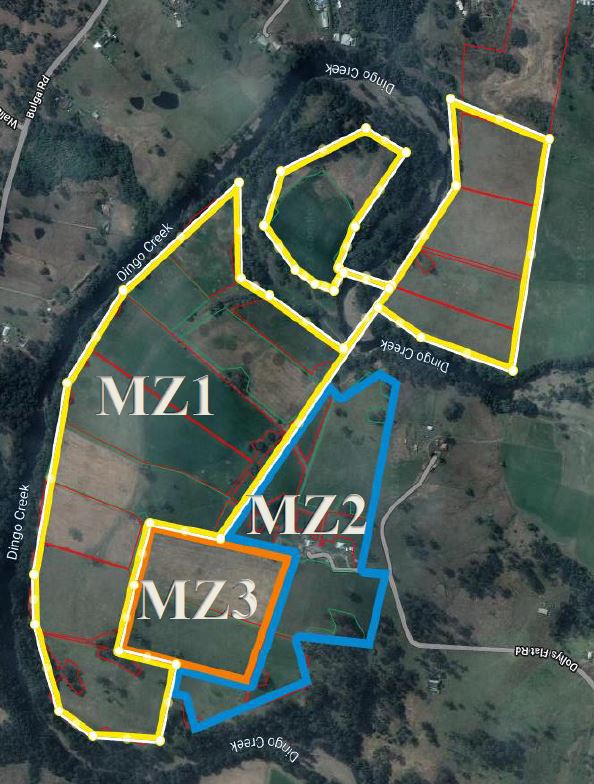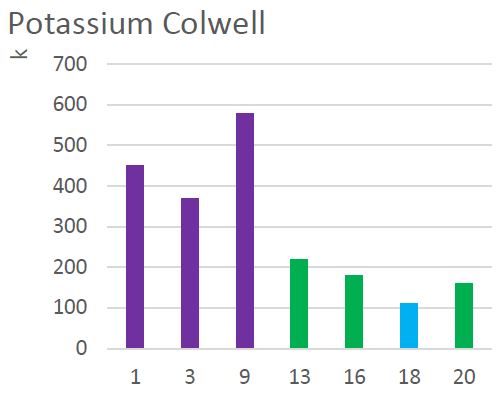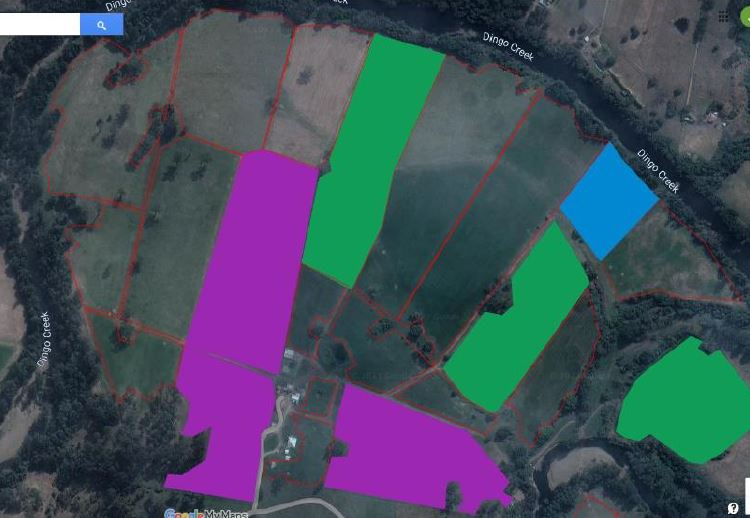MEMS Case Study - Guy and George Tiedeman
Getting value from Fert$mart Nutrient Management Planning
The Australian dairy industry’s Fert$mart program assists farmers to implement a standard approach to the preparation, implementation and monitoring of nutrient plans.
A Fert$mart Plan helps farmers and their advisors to make more informed and cost-effective decisions by planning the way in which fertiliser will be used strategically across the annual seasons, when and where it is needed.
By optimising plant uptake through precision application timing, rate, placement and product mix, nutrient loss to the environment is minimised and production is boosted when most essential for direct grazing or harvesting as conserved feed.
The Fert$mart approach
Fert$mart advisors work with landholders to commence the process of developing a plan by learning more about how different areas of the farm are managed. They determine separate Farm Management Zones (FMZ) by considering:
- topography
- soil types
- pasture and crop types
- milking platform/young stock paddocks
- irrigated/dryland paddocks
- history of effluent use and sacrifice/night paddocks
- natural assets such as rivers, creeks, wetlands and biodiversity areas.
Soil testing is undertaken, sampling each determined FMZ to build an understanding of current nutrient levels. Typically, 6-10 FMZ are identified, with some potentially amalgamated if soil nutrient analysis results demonstrate similar nutrient levels.
Sampling is undertaken by the advisor along a repeatable (often GPS is used) transect within a representative paddock of the FMZ, with 30 cores to a minimum depth of 10cm. Soil samples are analysed and interpreted by a National Associated of Testing Authorities (NATA) accredited laboratory.
Soil nutrient results are assessed by the nutrient advisor against the NSW Regional Soil Fertility Guidelines (Dairy Australia, 2013) that outline optimal ranges for nutrients based upon target yield.
Fert$mart planning also considers other nutrient inputs, outputs and movement around the farming system to inform the overall farm nutrient budget.
These include direct and indirect effluent, manure solids/sludge, purchased feed (grain and fodder) and conserved feed harvested and fed across different FMZ.
Guy and George Tiedeman
Father and son, Guy and George Tiedeman, commenced leasing their farm at Dolly’s Flat
(Wingham, NSW) in March 2023. They have a year-round milking herd of 220 cows.
With little known about past management of the farm, comprised of 59 hectares irrigated and 14 hectares dryland milking platform, they believed that undertaking the Fert$mart nutrient planning process would equip them with the right knowledge to optimise yield most efficiently and effectively.

George Tiedeman, Guy Tiedeman and agronomists, inspect the annual ryegrass of the “Hill” FMZ.
Together with their agronomist, Josh Hack, the Tiedeman’s determined their FMZ.
“The results of the soil tests allowed us to break the farm into three zones for ease of management,” says Josh.
“FMZ 1 is the irrigated river flats (yellow) that were lowest in nutrients (Paddocks 13, 16, 18 and 20).
“They often flood, are a lighter soil and have good production. FMZ 2 is the dryland, undulating area (blue) that has typically been night paddocks and is therefore very high in potassium and phosphorus (paddocks 1 and 3).
“Lastly, FMZ is an irrigated area of the undulating hills (orange) and has historically been night paddocks. We separated this from FMZ 1 as it is much higher in nutrients (paddock 9).”
Tiedeman FMZ after results of soil nutrient tests. Recommendations were prepared by their agronomist, Josh Hack, for each FMZ. Yellow= irrigated river flats, blue= dryland and old sacrifice/night paddocks, orange= irrigated area with higher nutrients due to night paddock history.
Soil test results and analysis against the NSW Regional Soil Fertility Guidelines were both graphed and mapped by Josh in the Tiedeman’s Fert$mart Plan.
According to the NSW Regional Soil Fertility Guidelines, test results for potassium colwell show that paddocks 1, 3 and 9 of FMZ 2 and 3 are “High” (purple) (low maintenance required) whereas paddocks 13, 16 and 20 of FMZ 1 are “Adequate” (green) (maintenance fertiliser required) and paddock 18 is “Marginal” (Blue) (moderate capital required).
“There is no point applying potassium (K) and phosphorus (P) in both FMZ 2 and 3, saving on input costs and reducing any risk of run-off losses,” Josh said.
The recommendation for these FMZ this year is strategic use of Urea (N) to establish and maintain the annual ryegrass, and a pasture booster leading into spring and the silage season.
“Silage will help to remove some of the high K levels,” explains Josh. “FMZ 1, however, needs some capital inputs using custom blends of N:P:K:S to lift nutrient levels and enhance production of this irrigated area.
“A strategy of smaller applications more frequently decreases any risk of loss to adjacent Dingo Creek.”
Fert$mart benefits
George Tiedeman says that the benefits of having a Fert$mart Plan prepared by Josh were immediately evident.
“It’s helped us understand what our paddocks need and helped us get the most bang for our buck. We have been able to target certain paddocks in terms of getting fertiliser on where it needs to be,” he says.
The Tiedeman’s have commenced implementation of their Fert$mart Plan and believe that custom blend recommendations have allowed them to know exactly what they need to apply onto specific areas.
“It has really helped us to come out on top as our budget was really tight coming onto this farm. Without history we had no idea what fertility was like across the farm. With getting the Fert$mart Plan we know what is going on, we know what we need, and we know where we need it.”
George also believes that developing the plan and building a relationship with someone he can trust has been important.
“This way Josh can continue to advise us and help us monitor and map our so we can go ahead and be profitable in what we are doing,” he says.
Acknowledgement
The Fert$mart program is underpinned by the Fertcare® Accredited Advisor training program, responsible for certification of nutrient advisors in the standards expected when offering dairy specific nutrient advice (Fertilizer Australia, 2020).
The Clean Coastal Catchment Project is part of the NSW Government’s Marine Estate Management Strategy which aims to increase water quality and improve the natural environment.


